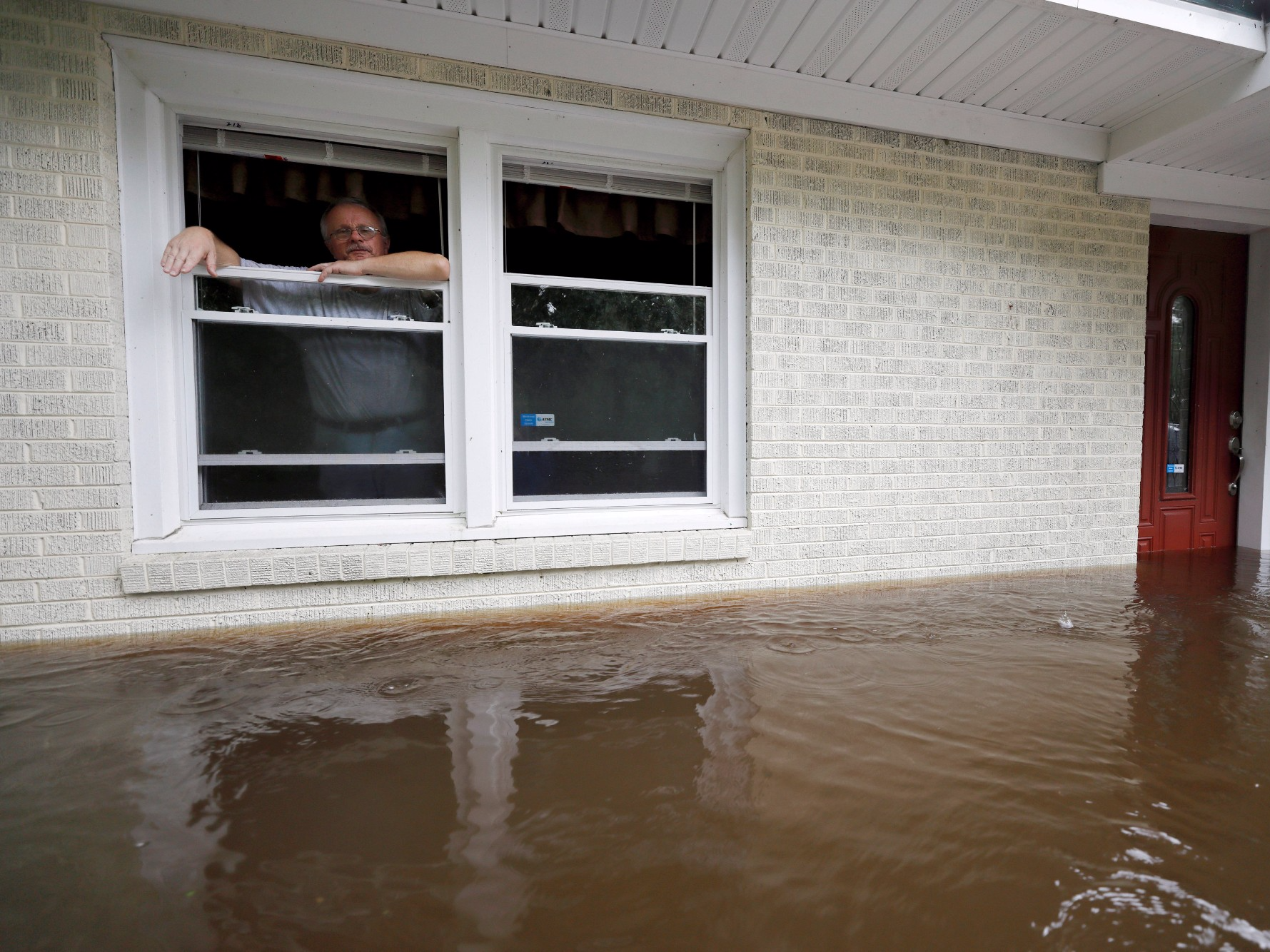- An unprecedented report from scientists studying Hurricane Florence shows how climate change is making the storm stronger.
- According to the results, warmer water and more humid, hot air increased the storm’s precipitation forecast totals by more than 50%.
- The estimations are preliminary, but scientists say they’ll analyze actual rainfall totals once the storm is over.
- “Dangerous climate change is here and now,” the researchers said.
Hurricane Florence has arrived. Forecasters correctly predicted the storm would lash the Carolinas for days, battering homes, inundating businesses, and sending waves of water up to 11 feet high onto the shore.
The storm is also breaking rainfall records. Some places near the North Carolina coast have already gotten more than 30 inches of water.
Although scientific evidence shows storms are stronger and wetter because of climate change, no one has ever really been able to pin down how much human-caused warming contributes to these damaging forcasts ahead of a storm’s arrival.
But for the first time, a group of academic research scientists calculated roughly how much of Hurricane Florence's predicted rainfall total is our fault. The team estimated that forecasted rain totals are more than 50% higher than they might have been if humans hadn't warmed up the atmosphere by burning fossil fuels.
"Dangerous climate change is here now," Michael Wehner, a senior staff scientist at the Lawrence Berkeley National Laboratory told Business Insider, shortly after his new study was released last week. (Wehner's opinions are his own, and not those of the federal government, he said.)
Wehner worked alongside a team of researchers from Stony Brook University and the National Center for Atmospheric Research to come up with the results. They relied on an academic forecasting model used around the world called CAM.
Their report details how the forecast for Florence might have looked if there were no people burning coal, gas, or oil - no cars, no trucks, no smoke stacks. These activities have raised the planet's average temperature by roughly 2 extra degrees Fahrenheit since the 1880s.
Imagine, Wehner said, "the ocean's a little cooler, the air's a little cooler, and the humidity is a little bit less."
If that were the case, according to Wehner's analysis, Florence would be much less wet.
Warmer air can hold more water vapor, so hotter storms can become stronger and produce more rain. Humidity helps too, because the water content of warmer air can be higher. Warmer ocean waters also fuels more aggressive storms by pumping more heat and evaporating seawater up into a hurricane.
We're already seeing this play out. Peak rain rates, which arrive when the fierce core of a storm is overhead, have increased 30% over the past 60 years all across the US, according to Andreas Prein, a project scientist with the University Corporation for Atmospheric Research.
Researchers (including Wehner) have also studied how Hurricane Harvey was impacted by warmth, and discovered that climate change made that storm at least 18% wetter. But the data from Florence is even more striking.
"It's surprising in the sense that its an awfully big percentage," Kevin Reed, a senior author of the paper and an assistant professor at Stony Brook University, told Business Insider.
Reed plans to calculate more results based on actual rainfall totals after the storm passes. But he said it shouldn't come as a shock that our warming planet is causing storms to get wetter and more damaging.
"The impacts of climate change are very real, and they're occurring already," he said. "We have to start to really face the challenge, if we're going to be able to do something about it."

